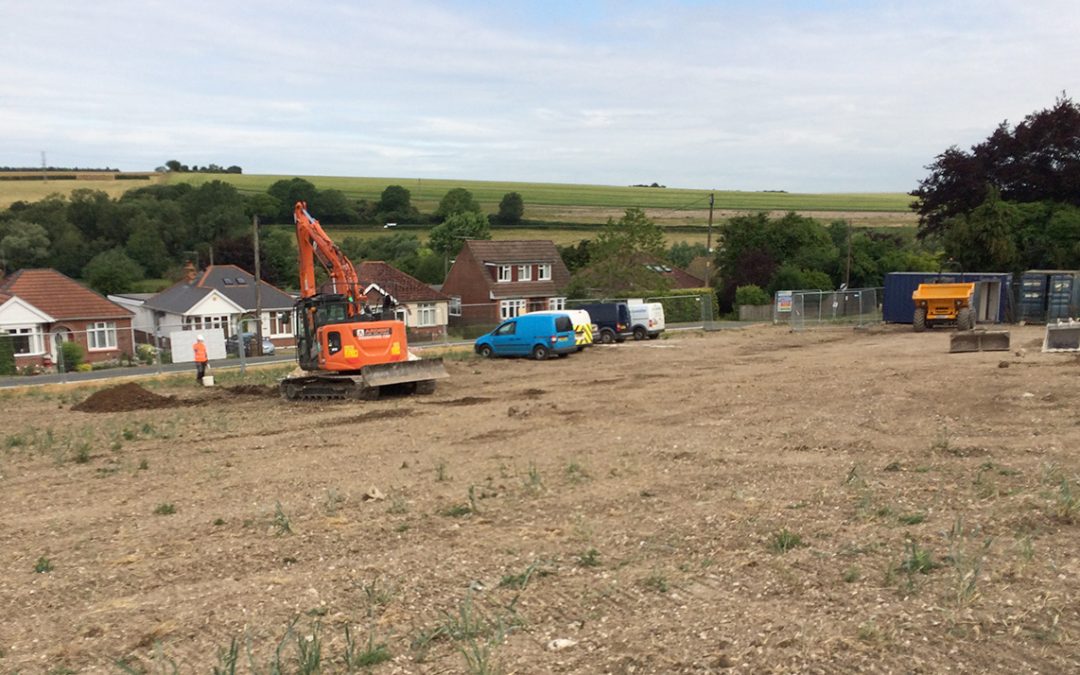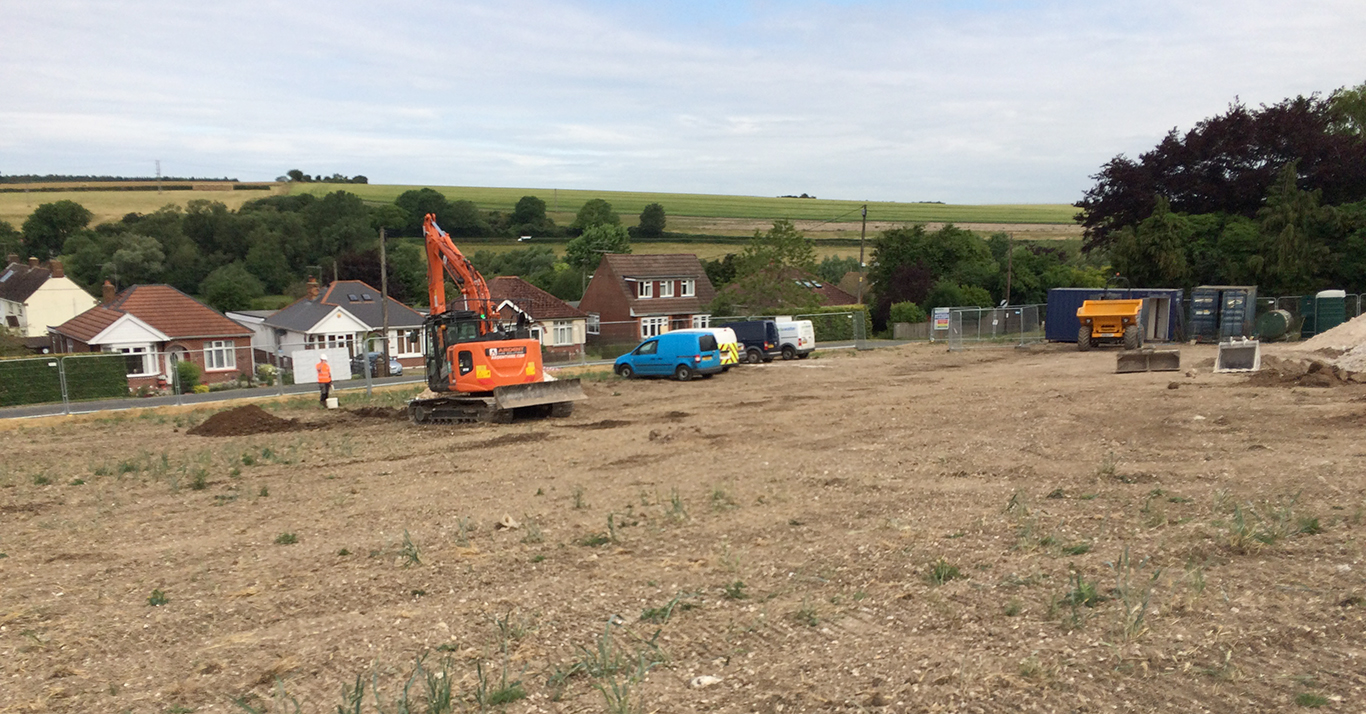Chalking up Another Great Result
by adsoxford | Oct 8th 2019

Chalking up Another Great Result
8th October 2019
Geotechnical • Specialist Services
A back to school approach involving thorough research to tackle a complex slope stability question, achieves a sound solution for Ground & Water’s client.
Our Client
The client was a local real estate developer in Wiltshire. The project involved work closely with a structural engineer and the client’s architect.
Preliminary-Assessment
During the initial site works, a walkover revealed the site comprised former arable farm land on a shallow (~20-30°) slope that had been stripped of topsoil in some areas. The client had previously undertaken some trial pit soakaway tests, which along with the trial pits undertaken by Ground & Water revealed the geology comprised a superficial capping of Head Deposits over a portion of site underlain by weathered, unstructured chalk.
Our Challenge
Ground & Water was tasked with classifying the geology underlying a site, intended for residential development, located on chalk down land near Salisbury in Wiltshire.
The residential development site comprised a chalk slope, on agricultural land bordering a road and the architect wanted to use cut-and-fill to level the site area by cutting into and terracing the rear garden areas and compacting the fill to create an embankment supporting an access road and parking area to the front of the properties.
Ground & Water was required to assess the geotechnical parameters of the chalk to help a structural engineer to determine a compaction method and provide a slope stability analysis for both the cuttings and embankment to inform a safe long-term slope angle.
The Ground & Water Approach
Intrusive investigation comprising a number of shallow trial pits was undertaken across the site to further prove geology, take bulk and disturbed samples for geotechnical testing of the chalk and complete in-situ CBR testing. CBR test results and classification of the chalk as weathered and unstructured could be used to provide preliminary information on compaction methods, but the determination of long-term stable slope angles was difficult due to the re-moulding and compaction of material in order to form the embankment.
Primary guidance used for characterisation of chalk (CIRIA C574) deals primarily with structured and unstructured chalk in-situ, meaning the data provided on slope angles was not representative for the re-moulded material making up any embankment on site. Conservative values provided as a preliminary appraisal were not ideal for the development proposed by the client, so research was undertaken into wider academic literature to see whether this could be revised.
The Outcome
Based on laboratory testing results and a review of literature relating to re-moulded chalk embankments, including those used for railway lines; a revised value for long-term stable slope angle and compaction method could be provided to the client in order to better suit their needs for development. In addition, recommendations for remedial slope reinforcement measures were also given in order to further reduce the risk of slumping or slope failure over time. The Ground & Water approach used the best information to advise a technically compliant solution that would manage the risk of long term slope failure. This allowed the client to progress its plans for the development.

